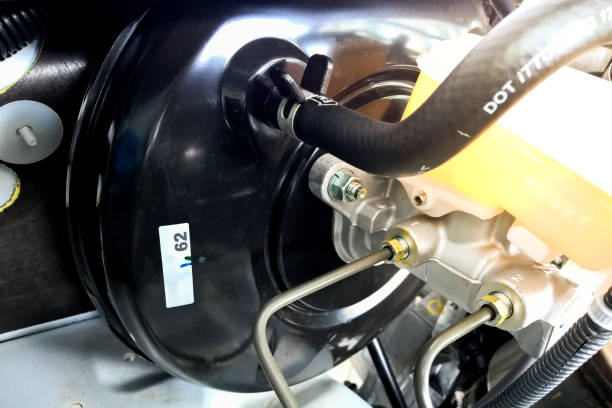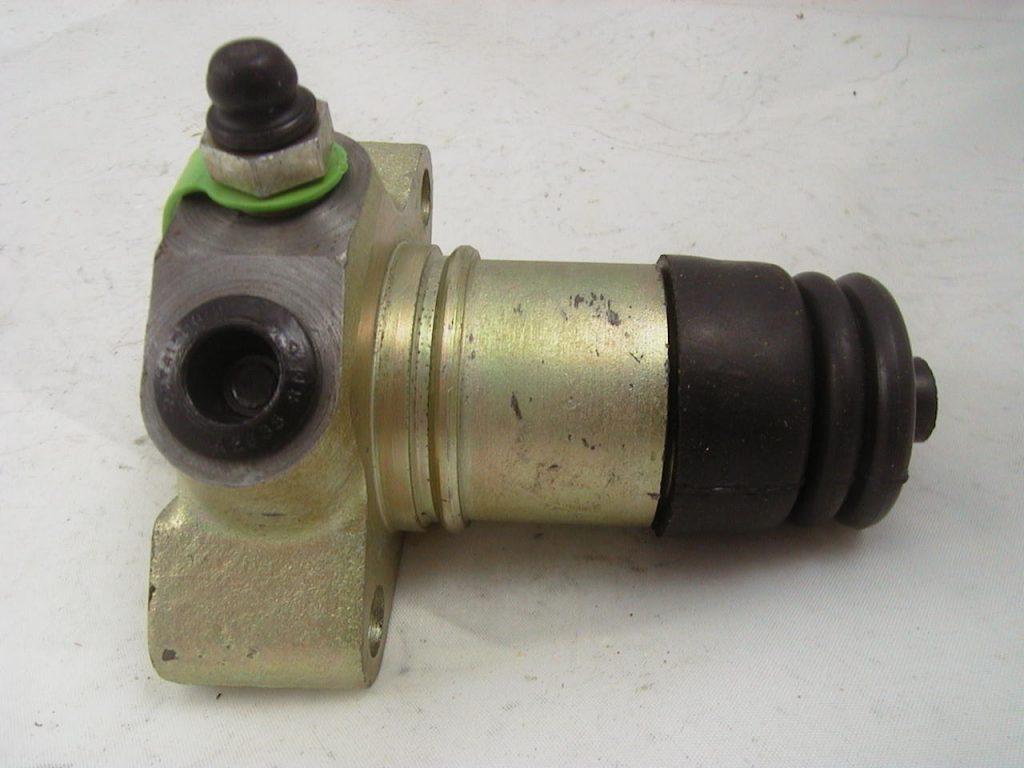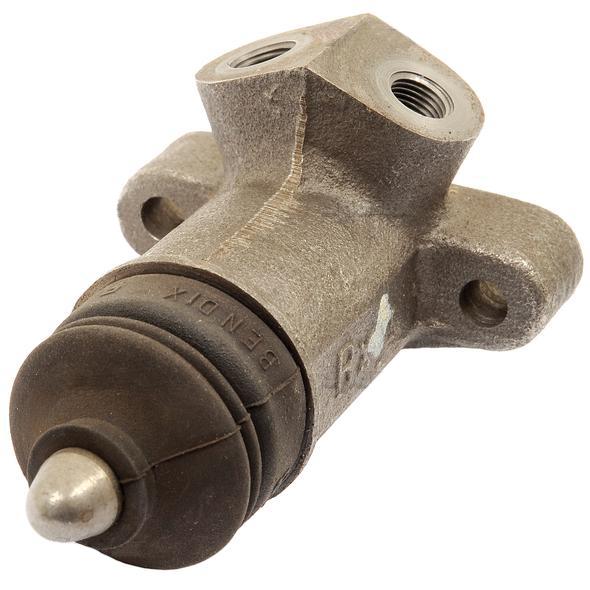The braking system in your car comprises a brake slave cylinder and a master cylinder. Together the two components build the hydraulic system which generates fluid pressure when brake pedal movement takes place. Someone may find it hard to detect a brake slave cylinder, as the conventional name for this component is different. Often this leads to confusion about what a brake cylinder is, and what it does.
Contents
How Brakes Work
A brake booster multiplies the amount of force using a vacuum and therefore, the fluid goes into the braking system when you press the pedal. Through the car’s braking system, it acts on each slave cylinder in your car’s wheels.
In turn, the pressure pushes the piston in every slave cylinder, and that converts into a push on the brake pads proportionately, which stops the car.

Leverage Is Key
The torque multiplies using larger diameter gears and divides or increases the amount of force, to transmit it across. For example, 1 pound of force exerted on a 1-inch diameter, in turn, exerts it on a 2-inch diameter gear; so the total amount of force will be 2 pounds. A brake slave cylinder works in almost the same way but with fluid pressure. The job of a master cylinder is to displace the amount of pressure, which is based on the diameter. Then the pressure increases significantly by changing the size and number of slave cylinders the pressure is working on.
When not applying the brakes
The piston cups No. 1 and No. 2 are located between the inlet port and the compensation port creating a passage between the master cylinder and the reservoir.
The No. 2 plunger is pushed to the right by the No. 2 return spring, but the blocking bolt prevents it from going any further.
When pressing the brake pedal
Piston No. 1 moves to the left and the cuppen of this piston covers the compensation port to block the path between this cylinder and the tank. As the piston is pushed further, it increases the hydraulic pressure inside the master cylinder. This pressure acts on the rear brake cylinders. Because this pressure also pushes piston number 2, piston number 2 acts like piston number 1 and acts on the brake cylinders of the front wheels.
When releasing the brake pedal
The pistons are pushed back to their original position by hydraulic pressure and the force of the return springs. However, because the brake fluid from the brake cylinders does not flow immediately, the hydraulic pressure inside the master cylinder temporarily decreases (vacuum develops).
Therefore, the brake fluid inside the reservoir flows into the master cylinder through the inlet, and multiple holes at the top of the piston and around the circumference of the piston cuppen. After the piston has returned to its original position, brake fluid gradually flows from the brake cylinder to the master cylinder and then flows into the reservoir through the compensation ports. This compensation port also eliminates changes in the volume of the brake fluid that can occur inside the cylinder due to temperature changes. This prevents hydraulic pressure from building up when the brakes are not in use.
Certainly, smaller cylinders deliver less, and larger cylinders deliver more pressure. This is necessary to distribute fluid pressure from wheel to wheel.

[efsbutton class=”btn” style=”” size=”” color_class=”” align=”left” type=”link” target=”false” title=”Join our FREE CAR GIVEAWAY Campaign here” link=”https://carfromjapan.com/campaign/car-from-japan-free-car-giveaway-2018″]
Slave Cylinders on a Modern Braking System
To find the exact location of slave cylinders in your car’s braking system, don’t go any further than the brake calipers. Inside the brake caliper, several pistons work on the brake pads. The size and number of pistons are usually bigger on the front, to bear the weight surge during braking.
Whereas, the calipers in the rear are smaller and fewer since the weight distribution is lower in the back, while braking. As you press the brake pedal, the proportioning valve works as a divider that distributes the pressure between the back and front. Afterward, the slave cylinders transmit this pressure over the wheels.
A brake slave cylinder is the right term to be used for every piston and bore in brake calipers. We call them slave cylinders because they are active only when the master cylinder exerts pressure; this indeed justifies the naming of a hydraulic system.
Watch more:




Could you tell me the name and part number for this slave cylinder in the picture, as I cannot find anywhere selling this exact one.